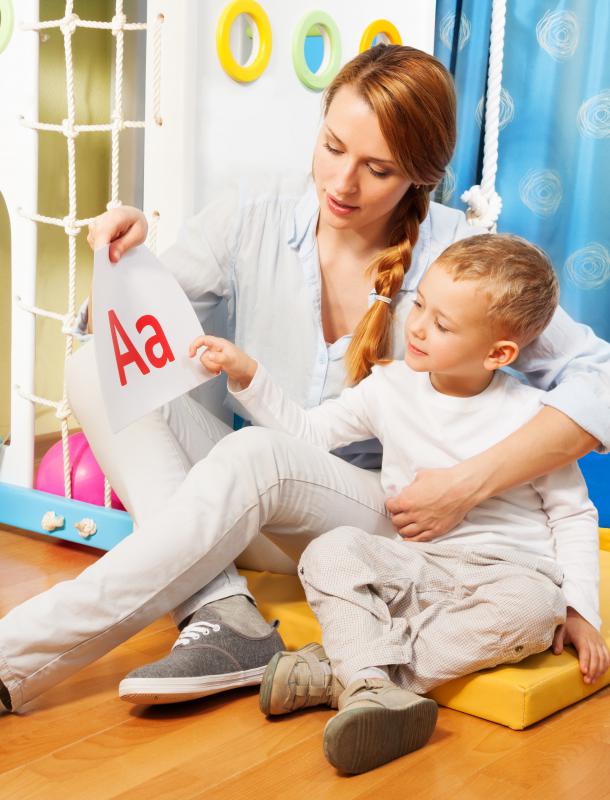At WiseGEEK, we're committed to delivering accurate, trustworthy information. Our expert-authored content is rigorously fact-checked and sourced from credible authorities. Discover how we uphold the highest standards in providing you with reliable knowledge.
What Are the Best Tips for Learning with Dyslexia?
Children who have dyslexia may have difficulty learning to read and write letters, words, and numbers. Traditional methods of teaching are often ineffective for these students and can lead to frustration in the classroom and at home. Students who have dyslexia need to rely on a number of strategies throughout their education. Learning with dyslexia often involves the use of games, drills, and lots of practice reading and writing in nontraditional ways. Older students who are learning with dyslexia may find it easier to retain information needed to pass tests and classes through an auditory or kinesthetic lesson rather than through a quiet reading and writing exercise.
For young students, the first obstacle in learning with dyslexia is the difficulty posed by learning to read and write. Studying phonics has been shown to be the most effective method for dyslexic students to learn to read. There are many games and activities that students can participate in that will help them learn which sounds go with which letters. When learning to write, alternative writing, such as tracing in sand or using sidewalk chalk on pavement can help make it easier for students to remember the proper formation of the letters while their fine motor skills are still developing.

Older children who are learning subject matter in school may also have difficulties learning with dyslexia. For these students, using a variety of tools can be helpful. Many teachers assign texts for students to read and learn from, and dyslexic students may have difficulty getting information from written sources. Some computer programs can read electronic texts aloud to students, which is particularly helpful, because it allows dyslexic students to focus on the content rather than on the reading. In math, the use of calculators or computer programs that automatically line up numbers in the correct way can be instrumental in helping these students make fewer mistakes.
For the most part, dyslexic students benefit greatly from curriculum that is geared towards either auditory or kinesthetic learning. Adding movement to schoolwork is one way that teachers and parents can help these students retain more information. Providing information in multiple formats, such as text, audio recording, and video can also help dyslexic students learn better. The most important thing when working with this group of students is finding ways to make them successful learners rather than faulting them for failing to process visual information correctly. Though learning with dyslexia can be challenging, most dyslexic students are cognitively normal and fully capable of learning through alternative means.
AS FEATURED ON:
AS FEATURED ON:











Discuss this Article
Post your comments